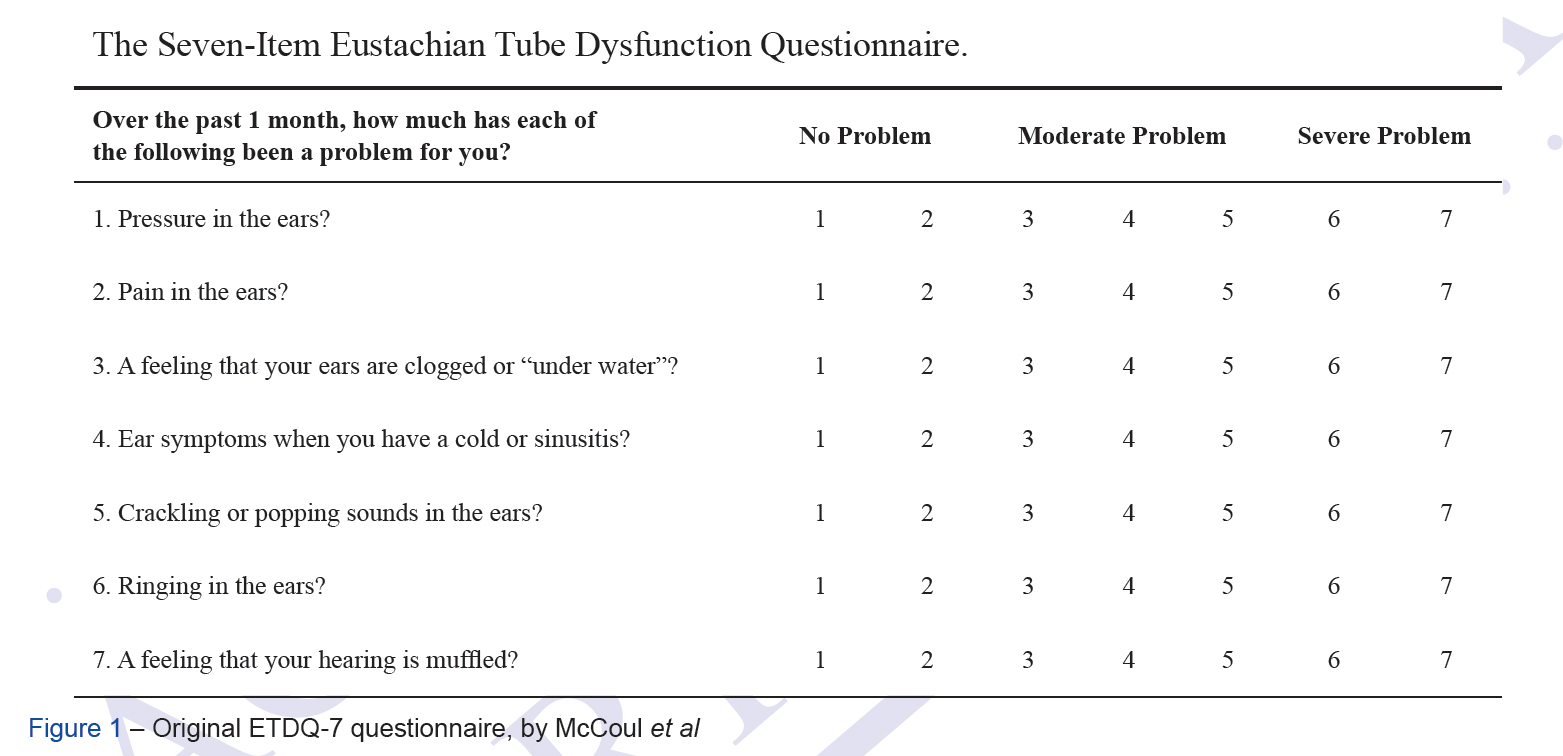Introduction: Eustachian tube dysfunction is a common cause of morbidity in both adults and children, associated with nasal and otologic symptoms. Symptomatic evaluation is very important for the correct diagnosis and evaluation of the treatment efficacy of this entity. The “7-item Eustachian Tube Dysfunction Questionnaire” was described and validated by McCoul et al and proved to be a useful tool, easy to apply, with good validity in the evaluation of eustachian tube dysfunction symptoms. This study presents the validation process of the European Portuguese version of the “7-item Eustachian Tube Dysfunction Questionnaire”. The aim of this study was to translate and validate the European Portuguese version of “Eustachian Tube Dysfunction Questionnaire-7”.
Material and Methods: The “7-item Eustachian Tube Dysfunction Questionnaire” was adapted and translated to European Portuguese using standard validation methodology. The European Portuguese version of “7-item Eustachian Tube Dysfunction Questionnaire” was completed by a group of 50 consecutive adult patients diagnosed with eustachian tube dysfunction and 25 healthy patients who served as a control group. All respondents in the Eustachian tube dysfunction group repeated the “7-item Eustachian Tube Dysfunction Questionnaire” in a two week-period. Statistical analysis was performed to determine its psychometric properties (reliability -internal consistency and test–retest reproducibility, and discriminant validity).
Results: Face and content validity were confirmed, and reliability testing revealed similar internal consistency for the entire instrument as the original questionnaire, and strong correlation between individual items and total score. The questionnaire was easy and quick to administer. Test-retest reliability of the European Portuguese version was adequate, with excellent intraclass correlation coefficients and without significant differences between the total score from the first and second evaluations. Discriminative validity was confirmed by statistically significant differences between scores of the test and control groups.
Discussion: This study presents the European Portuguese version of the “7-item Eustachian Tube Dysfunction Questionnaire” questionnaire, an adapted, validated and well-accepted instrument to evaluate the symptoms of eustachian tube dysfunction in the European Portuguese speaking population.
Conclusion: The European Portuguese version of the “7-item Eustachian Tube Dysfunction Questionnaire” is recommended as a routine procedure in the assessment of patients with eustachian tube dysfunction in the European Portuguese speaking population and for the evaluation of treatment outcome.
